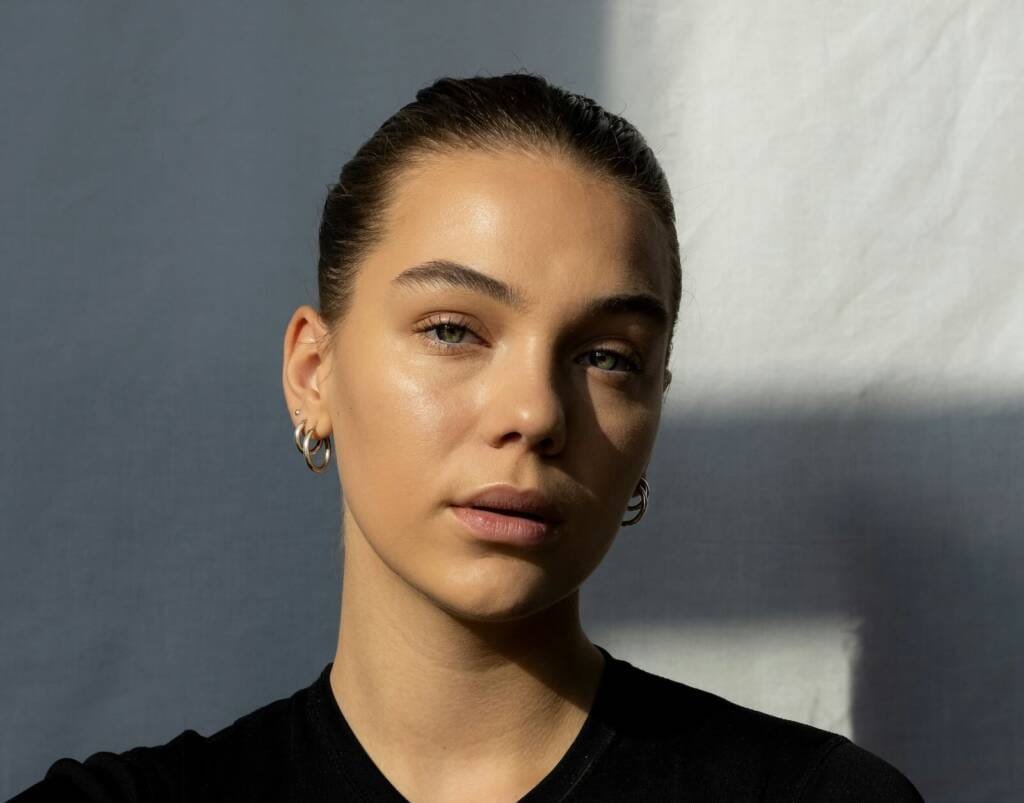Facial rejuvenation procedures have become increasingly popular for those seeking to turn back the clock on aging. Two common options are mini facelifts and traditional facelifts, each offering unique benefits and considerations.
A mini facelift typically involves smaller incisions and focuses on addressing sagging skin around the lower face and neck, while a traditional facelift is more comprehensive, addressing multiple areas of the face and neck with longer-lasting results.
Overview
The landscape of facial rejuvenation has evolved significantly, with mini facelifts seeing unprecedented popularity in recent years. This surge in demand has been driven by social media influence and increased awareness of facial appearance through video conferencing platforms, leading many surgeons to report that mini facelift requests now rival or exceed those for traditional procedures.
Both procedures aim to restore a more youthful appearance, but they differ in their approach and extent of treatment. Mini facelifts generally require less recovery time and are often suitable for patients with mild to moderate signs of aging. Traditional facelifts, on the other hand, provide more dramatic results and are better suited for those with more advanced signs of aging.
The choice between a mini facelift and a traditional facelift depends on individual factors such as age, skin condition, and desired outcomes. Consult with Dr. Bart Kachniarz at Dr K Miami Plastic Surgery to determine which facelift option best aligns with your goals. Dr K is a Harvard and Johns Hopkins-trained plastic surgeon offering personalized care.
| Full Facelift | Mini Facelift | |
| Invasiveness | High | Low to Moderate |
| Anesthesia | General or Local w/ | Local w/ or w/o sedation |
| Concerns | Moderate to Severe Aging | Mild to Moderate Aging Addressed |
| Result Duration | 10–15 years | 5–10 years |
| Cost | $8,000-$15,000+ | $5,000-$12,000 |
| Downtime | 2–4 weeks | 1–2 weeks |
What is a Mini Facelift?
Often referred to as a ‘Weekend Facelift‘ due to its less extensive nature, a mini facelift allows many patients to return to their normal activities after just 48-72 hours, though individual recovery times may vary based on personal healing factors.
Modern mini facelifts now come in several specialized variations to match specific patient needs. The ‘Ponytail Lift’ technique focuses on treating wrinkles in the lower to mid-face and jawline, making it particularly suitable for younger patients seeking subtle rejuvenation with minimal scarring. For those concerned with mid-face aging, specialized techniques can address hollow or lax areas around the cheekbones and upper jaw regions
Mini facelifts come in several variations to address specific areas of concern. An upper lift, sometimes called a “Pony Tail Lift,” focuses on lifting the brows and cheeks as a single unit, which can also enhance the appearance of eye corners. For those primarily concerned with lower facial aging, a targeted cheek and jowl lift addresses the jawline area with precise incisions in front of the ear. Patients seeking neck rejuvenation can opt for a focused neck lift using incisions behind the ears and under the chin.
Mini facelifts primarily address sagging skin around the jowls and neck. The procedure involves making small incisions near the ears to access and tighten the underlying facial muscles and tissues. Surgeons remove excess skin and reposition remaining skin for a more youthful appearance.
While both procedures are surgical in nature, a mini facelift is typically performed as a same-day procedure. Though local anesthesia with sedation is common, some cases may require general anesthetic. Full facelift patients occasionally need an overnight hospital stay, though this isn’t always necessary.
The mini facelift surgery typically takes 2-3 hours under local anesthesia with sedation. Recovery time ranges from 7-10 days, significantly shorter than a full facelift. Patients can expect less swelling, bruising, and scarring compared to traditional techniques.
Mini facelifts offer natural-looking results, providing a refreshed appearance without dramatic changes. The effects can last 5-10 years, depending on factors like skin quality, lifestyle, and aging process.

What is a Traditional Facelift?
Traditional facelifts typically begin with incisions around the hairline, continuing down and around the ears. The surgeon then lifts and repositions the underlying tissues and muscles. Excess skin is trimmed away, and the remaining skin is redraped over the newly contoured face.
This procedure can correct:
- Sagging cheeks
- Deep nasolabial folds
- Jowls along the jawline
- Loose neck skin
The results of a traditional facelift are generally long-lasting, often enduring for 10-15 years. Recovery time usually ranges from 2-4 weeks, with most patients returning to normal activities after about 3 weeks.
Complementary Procedures
To achieve optimal rejuvenation results, both mini and traditional facelifts can be enhanced with complementary procedures. Common combinations include:
- Facial fat grafting to restore lost volume in the cheeks and other areas
- Laser skin resurfacing for improved skin texture and quality
- Lip lift procedures to address aging in the upper lip area These additional procedures can be discussed during your consultation to create a comprehensive rejuvenation plan tailored to your needs.
Key Differences
1. Candidacy: Choosing the Right Facelift for You
Mini facelifts are best suited for patients in their late 30s to early 50s with mild to moderate lower face and neck laxity. This procedure is particularly effective for those noticing the first signs of aging, especially subtle creases in the midface and cheek area.
The timing of your procedure can significantly impact long-term results. Patients who undergo facelift surgery at a younger age, when skin elasticity is still good, often achieve more resilient and longer-lasting results compared to those who wait until significant skin laxity has developed. While a mini facelift can effectively take about 5 years off your appearance, the key factor in candidacy is skin elasticity – your skin should still maintain some natural bounce-back quality for optimal results.
While traditional facelifts typically attract patients in the 55-69 age range, mini facelifts are increasingly sought by those in their mid-30s to late-40s. These younger patients often seek a more permanent solution to replace frequent non-surgical treatments, allowing them to maintain their results without regular touch-ups.
While many patients begin considering mini facelifts in their 40s, there is no strict upper age limit for this procedure. The key determining factors are overall health, mobility, and treatment goals rather than age alone. Ideal candidates typically present with mild to moderate facial and upper neck aging changes, well-defined neck and jawline features, and realistic expectations about the outcome.
Mini facelifts are particularly suitable for addressing minor to moderate sagging in the jaw, neck, and lower face regions. Patients with more extensive facial aging may benefit more from a traditional facelift approach.
Mini facelifts also benefit older individuals who have previously undergone facelift surgery and are experiencing minor recurring skin laxity. The procedure offers an excellent solution for those seeking refreshed results without undergoing another full facelift.
Traditional facelifts are usually recommended for patients with more advanced signs of aging, including pronounced sagging in the cheeks, jowls, and neck. If you have deep nasolabial folds, marionette lines, or significant skin laxity, a full facelift will likely provide better results.
2. Scope of Procedure
Mini facelifts target specific areas of the lower face, primarily addressing mild to moderate sagging around the jawline and neck. This procedure is less extensive and focuses on subtle improvements.
Both procedures involve surgical separation and manipulation of skin, tissue, and muscle to achieve the desired lifting effect. This surgical approach enables more substantial and lasting results compared to non-surgical alternatives like dermal fillers or injectables.
Traditional facelifts cover a broader area, including the cheeks, jowls, neck, and sometimes the forehead. They address more severe signs of aging and provide comprehensive facial rejuvenation.
The choice between these procedures depends on the patient’s age, degree of facial aging, and desired results.
2. Anesthesia and Sedation Methods
Mini facelifts often use local anesthesia with sedation. This approach reduces risks associated with general anesthesia and allows for quicker recovery.
Traditional facelifts typically require general anesthesia due to the procedure’s complexity and duration. This enables surgeons to perform more extensive work without patient discomfort.
The anesthesia choice affects the surgical setting, with mini facelifts sometimes performed in outpatient clinics and traditional facelifts in hospitals or surgical centers.
3. Incision Techniques
Mini facelift incisions are smaller and less extensive. They are usually made around the ears, sometimes extending slightly into the hairline. These limited incisions result in less visible scarring.
Traditional facelifts involve longer incisions. They typically start at the temples, continue around the ears, and may extend to the lower scalp. Additional incisions under the chin might be necessary for neck contouring.
The incision pattern directly impacts the degree of lift and contouring achievable, with traditional facelifts allowing for more significant tissue repositioning.
4. Recovery and Downtime
Mini facelift recovery is generally shorter, with patients often returning to normal activities within 7-10 days. Swelling and bruising are usually less pronounced compared to traditional facelifts.
Most mini facelift patients can return to work and social activities within one week of surgery. Any residual bruising at this stage can typically be concealed with makeup, allowing for a confident return to public life.
Traditional facelift recovery takes longer, typically requiring 2-3 weeks before resuming regular activities. Patients experience more significant swelling and bruising due to the procedure’s extensiveness.
Both procedures require follow-up appointments and adherence to post-operative care instructions. Pain management and activity restrictions vary based on the type of facelift performed.
While recovery time differences between mini and traditional facelifts may seem significant, it’s important to consider the long-term impact rather than focusing solely on short-term recovery. A few extra days of downtime can be worthwhile when weighed against the decades of improvement you’ll enjoy from choosing the most appropriate procedure for your needs.

5. Expected Results
Mini facelifts provide subtle improvements, ideal for patients with early signs of aging. They effectively address minor jowling and neck laxity, creating a refreshed appearance.
Traditional facelifts offer more dramatic results, suitable for patients with significant facial aging. They can correct deep wrinkles, severe jowling, and extensive neck sagging.
The choice between procedures should align with the patient’s aesthetic goals and the degree of facial aging present.
Patients typically experience a rejuvenation effect that makes them appear five to ten years younger, while maintaining a natural look that doesn’t appear overly dramatic or surgically altered. This more subtle enhancement aligns well with the current trend toward natural-looking results in facial rejuvenation.
Results longevity is often influenced by the patient’s age at the time of surgery. Younger patients typically experience longer-lasting results due to better skin elasticity and healing capabilities. For optimal results maintenance, patients should incorporate a comprehensive skincare routine including broad-spectrum SPF 55 sunscreen daily.
6. Duration of Results
While individual results vary, patients typically enjoy their refreshed appearance for 2-6 years post-procedure. Factors such as skin quality, lifestyle choices, and maintenance care can significantly influence the longevity of results. Traditional facelift results tend to last longer, often extending beyond a decade with proper care.
Mini facelift results typically last 5-10 years. Factors like skin quality, lifestyle, and aging process influence longevity. The shorter duration of mini facelift results compared to traditional facelifts is primarily due to the limited treatment area. Since only specific portions of the face are addressed, untreated areas continue to age naturally, potentially affecting the overall aesthetic outcome over time.
Traditional facelift results can last 10-15 years or more. The more extensive nature of the procedure often yields longer-lasting outcomes.
Both procedures can be complemented with non-surgical treatments to maintain results. Proper skincare and sun protection are essential for prolonging the effects of either facelift type.
However, no cosmetic procedure can completely halt the natural aging process.
The longevity of results is significantly influenced by maintaining stable body weight and following proper skincare protocols.
Recovery Timeline
Mini Facelift: A mini facelift typically involves less extensive dissection of tissue and uses smaller incisions, which leads to a shorter recovery period. Immediately following the procedure, most patients experience mild to moderate swelling and bruising. Light activities can often be resumed within a few days, and many individuals are able to return to work in about one to two weeks, depending on the nature of their job. While you may notice an improvement in your appearance during the first couple of weeks, it can take several additional weeks for any residual swelling to subside completely.
Full Facelift: A full facelift is more comprehensive and addresses the lower face, jowls, and often the neck. This approach typically involves longer incisions and deeper tissue repositioning, which results in a more involved recovery. During the immediate post-operative phase, patients often experience moderate to significant swelling and bruising, and it usually takes about two to three weeks before returning to normal social activities. In the long term, it may take several months for all swelling and minor irregularities to resolve, revealing the final, refined contour of the face.
What are the expected scars from a mini facelift versus those from a traditional facelift?
Mini facelift scars are typically shorter and less noticeable. Incisions are often limited to the area around the ears and may extend slightly into the hairline.
Traditional facelift scars are longer, extending from the temples, around the ears, and into the lower scalp. While more extensive, skilled surgeons can often conceal these scars within natural skin creases and hairlines.
Risks
Mini facelifts generally involve fewer risks due to their less invasive nature. Patients may experience temporary numbness, bruising, and swelling in the treated areas. Infection is a rare but possible complication.
Some individuals report asymmetry or dissatisfaction with results, which may require revision surgery. Scarring is typically minimal but can occur, especially if proper aftercare instructions are not followed.
Nerve damage is uncommon but can lead to facial muscle weakness if it occurs. Blood clots are a rare but serious risk that requires immediate medical attention.
Traditional facelifts carry a higher risk profile due to their more extensive nature. Hematoma formation, where blood collects under the skin, is one of the most common complications.
Patients may experience prolonged swelling, bruising, and numbness that can last for several weeks. The risk of infection is slightly higher compared to mini facelifts.
Nerve injury is more likely in traditional facelifts, potentially resulting in temporary or permanent facial paralysis. Skin necrosis, where skin tissue dies due to compromised blood supply, is a rare but serious complication.
Unsatisfactory aesthetic results, including visible scars or an unnatural appearance, may occur and could necessitate additional procedures. Anesthesia-related complications are also more significant in traditional facelifts.
Cost Comparison
Mini facelifts generally cost less than traditional facelifts due to their less invasive nature. Current market rates show mini facelift procedures ranging from $3,500 to $6,500, while traditional facelifts typically cost between $5,000 and $10,000.
Generally, traditional facelifts can cost two to three times more than mini facelifts, making the mini facelift an economically attractive option for suitable candidates.
These procedures are considered elective cosmetic surgeries and are not usually covered by insurance. However, many providers offer payment plans to help manage costs.
Factors affecting the price include:
- Surgeon’s experience and location
- Facility fees
- Anesthesia costs
- Post-operative care
Some patients opt for financing options such as medical credit cards or personal loans to spread out payments over time. It’s important to discuss all costs and payment options with the surgeon during the consultation.
When comparing prices, patients should consider the long-term value. While mini facelifts are less expensive upfront, they may require touch-ups sooner than traditional facelifts.
At Dr K Miami, we offer comprehensive pre- and post-operative care to ensure optimal results. Ask about our personalized treatment plans that may combine facelift surgery with other rejuvenating procedures for enhanced outcomes.
Choosing the Right Procedure for You
Consider your age, skin condition, and specific concerns. Mini facelifts typically suit those in their 40s to early 50s with mild sagging and jowling. Traditional facelifts are more appropriate for individuals with significant skin laxity and deep wrinkles.
Evaluate your expectations. Mini facelifts offer subtle improvements with shorter recovery times. Traditional facelifts provide more dramatic results but require longer healing periods.
Assess your lifestyle and schedule. Mini facelifts allow for quicker return to normal activities. Traditional facelifts demand more downtime but yield longer-lasting effects.
Consulting with a Plastic Surgeon
Schedule your free initial consultation with Dr. Bart Kachniarz at Dr K Miami Plastic Surgery. As a Harvard and Johns Hopkins-trained surgeon specializing in aesthetic and reconstructive surgery, Dr K will assess your unique facial anatomy and recommend the most suitable facelift technique.
Discuss your goals and concerns openly. A skilled surgeon will recommend the most suitable option based on your anatomy and desired outcome.
Ask about potential risks, recovery times, and long-term results for each procedure. Request before-and-after photos of previous patients to gauge the surgeon’s expertise.
With advancing technology, many surgeons now offer virtual consultation options. These telehealth appointments allow patients to discuss their goals and receive initial assessments remotely, making expert care accessible regardless of location. In-person consultations are then scheduled once surgery plans are finalized.
Consider the surgeon’s approach to combining procedures. Some may suggest complementary treatments to enhance overall results.
Your Rejuvenation Journey Starts Here
Are you ready to turn back the clock and rediscover a more youthful, refreshed version of yourself? Take the first step today by scheduling your complimentary facelift consultation with Dr. Bart Kachniarz at Dr K Miami Plastic Surgery.
With his exceptional training from Harvard and Johns Hopkins, combined with our boutique clinic’s personalized approach, Dr K will help you achieve the natural-looking, long-lasting results you desire. Don’t wait any longer to start your transformative journey – contact Dr K Miami Plastic Surgery now and experience the difference our expertise and dedication can make in your life.
source https://drkmiamiplasticsurgery.com/mini-facelift-vs-traditional-facelift



